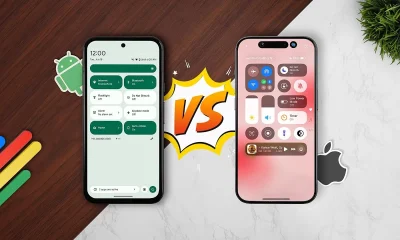
Technology
GPT-3 vs. ChatGPT: Which AI Language Model is Better?

The field of artificial intelligence has made significant advancements in recent years, particularly in the realm of natural language processing. Two popular language models that have gained attention in this area are GPT-3 and ChatGPT.

While both models are based on the same underlying technology, there are some key differences between them that may make one more suitable than the other for certain applications. In this article, we will evaluate GPT-3 and ChatGPT, and determine which of the two is better and why.

Overview of GPT-3 and ChatGPT
GPT-3 (Generative Pre-trained Transformer 3) is an advanced language model developed by OpenAI. It is based on a neural network architecture called a transformer, which is capable of processing large amounts of text data to generate human-like responses to user queries. GPT-3 has been trained on a massive amount of text data and can generate responses in a wide range of domains, including language translation, content creation, and chatbots.
ChatGPT, on the other hand, is a language model developed specifically for chatbot applications. It is based on the GPT-3 architecture but has been fine-tuned on a large corpus of conversational data to improve its ability to generate human-like responses in a conversational context. ChatGPT is designed to be fast and easy to use, making it a popular choice for developers who want to build chatbots for customer service, marketing, or other applications.
Performance Comparison
When comparing GPT-3 and ChatGPT, there are several factors to consider, including speed, accuracy, customization, and ease of use.
- Speed:
ChatGPT is designed to be fast and efficient, making it a great choice for chatbot applications that require quick responses. GPT-3, on the other hand, can be slower to generate responses due to its more complex architecture and larger size.
- Accuracy:
GPT-3 is known for its high level of accuracy in generating human-like responses. However, ChatGPT has been fine-tuned specifically for conversational contexts, which may result in more accurate responses in this domain.
- Customization:
GPT-3 is highly customizable and can be fine-tuned for specific applications using additional training data. ChatGPT is less customizable, as it has already been fine-tuned for chatbot applications.
- Ease of use:
ChatGPT is designed to be easy to use, with a simple web-based interface that requires no programming knowledge. GPT-3, on the other hand, requires some level of programming expertise and may be more difficult to set up and use.
Which Model is Better?
The answer to this question depends on the specific application and context in which the language model will be used. For chatbot applications that require quick and accurate responses, ChatGPT may be the better choice due to its speed and fine-tuning for conversational contexts. However, for applications that require a high degree of customization or generate responses in multiple domains, GPT-3 may be the better choice due to its versatility and customizability.
In summary, GPT-3 and ChatGPT are both powerful language models that have their own strengths and weaknesses. While GPT-3 is more versatile and customizable, ChatGPT is designed specifically for chatbot applications and is faster and easier to use. Ultimately, the choice between the two models depends on the specific application and context in which they will be used. By carefully evaluating the requirements and constraints of your application, you can determine which model is best suited for your needs.



























